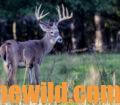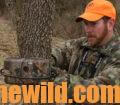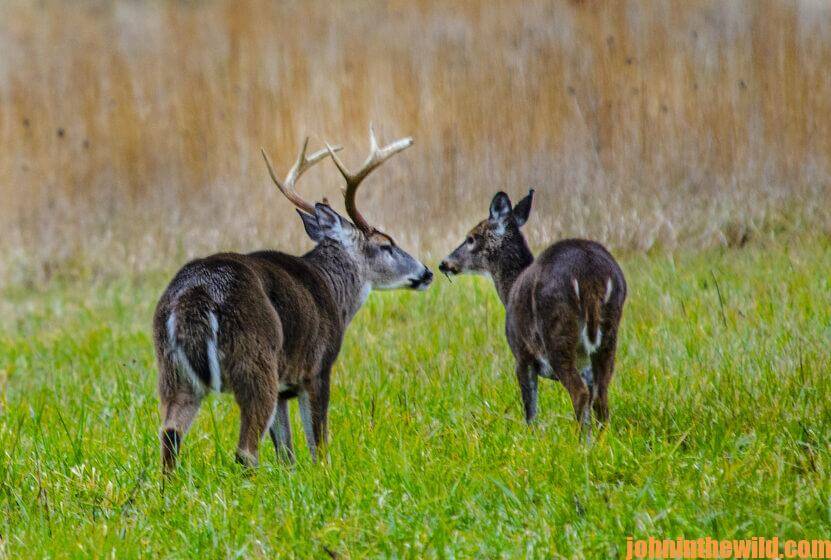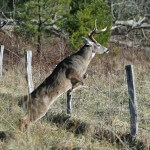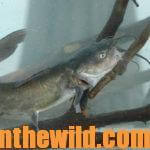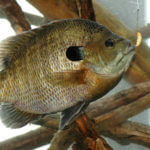Editor’s Note: Between the cover where deer bed down, and the places where they feed, big bucks are on the move and more vulnerable then.
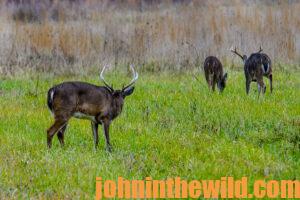 During the mating season, sex is the #1 deer lure. Often a buck will forego food for a few days to service does. A buck will prepare a scrape at places where bucks and does travel like old logging roads, trails, some other paths through the woods and the edges of fields.
During the mating season, sex is the #1 deer lure. Often a buck will forego food for a few days to service does. A buck will prepare a scrape at places where bucks and does travel like old logging roads, trails, some other paths through the woods and the edges of fields.
Generally, a scrape consists of a pawed area from 2 – 6 feet in diameter. In this pawed ground, the buck urinates to leave a strong scent for the doe. Then the buck will crunch but not eat the limbs and leaves of an overhanging bush or tree above the pawed ground to leave his scent from his mouth. He also will drag the overhanging brush across his eyes and nose to leave his scent for passing does. Finally he will rub trees and bushes with his antlers to leave a visible sign for the doe.

Most bucks make a series of scrapes – a scrape line. When a doe is ready or nearly ready to breed, she finds one of these scrapes. Often she’ll wait in that region for the buck to come by and service her. Most of the time the buck will check his scrape at least once every three days. However, the times he chooses to check his scrape line aren’t always during daylight hours. Once again, this is when a trail camera can pay off for you. The best time to hunt a scrape or a scrape line is when you get trail-camera pictures of a buck working his scrape during daylight hours. A hunter’s chances of taking a deer are extremely good if he positions himself 20–30 yards away from a scrape with the wind in his face during the rut.
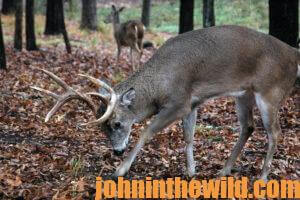
The two most-productive places to watch for bucks are between:
- two or more scrapes – so you can see the buck coming from either direction; – or,
- the food source and the scrape. Just because the rut is on, the buck won’t starve himself to death. So, food sources still will lure a male whitetail. The does he is searching for also will have to feed. The area or trail between the food and the scrape makes an excellent ambush point for the hunter.
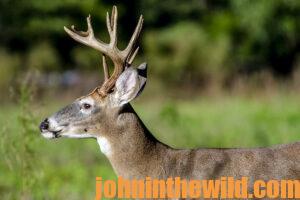 Another spot to take an older-age-class buck during the rut is a funnel area where the terrain is necked-down that homes scrapes. Both bucks and does will travel through this funnel. If scrapes are on both sides of the funnel, your odds are probably best for taking a mature buck at this site.
Another spot to take an older-age-class buck during the rut is a funnel area where the terrain is necked-down that homes scrapes. Both bucks and does will travel through this funnel. If scrapes are on both sides of the funnel, your odds are probably best for taking a mature buck at this site.
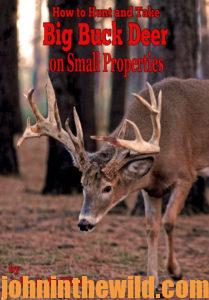 To learn more about hunting deer, check out John E. Phillips’ book, “How to Hunt and Take Big Buck Deer on Small Properties,” available in Kindle, print and Audible versions at (http://amzn.to/1vIcj4m). You may have to copy and paste this click into your browser. (When you click on this book, notice on the left where Amazon allows you to read 10% of the book for free, and hear 10% of the book for free). On the right side of the page and below the offer for a free Audible trial, you can click on Buy the Audible book. To see more of John’s deer books, visit www.amazon.com/author/johnephillips.
To learn more about hunting deer, check out John E. Phillips’ book, “How to Hunt and Take Big Buck Deer on Small Properties,” available in Kindle, print and Audible versions at (http://amzn.to/1vIcj4m). You may have to copy and paste this click into your browser. (When you click on this book, notice on the left where Amazon allows you to read 10% of the book for free, and hear 10% of the book for free). On the right side of the page and below the offer for a free Audible trial, you can click on Buy the Audible book. To see more of John’s deer books, visit www.amazon.com/author/johnephillips.
Tomorrow: Make Mock Scrapes for Deer

